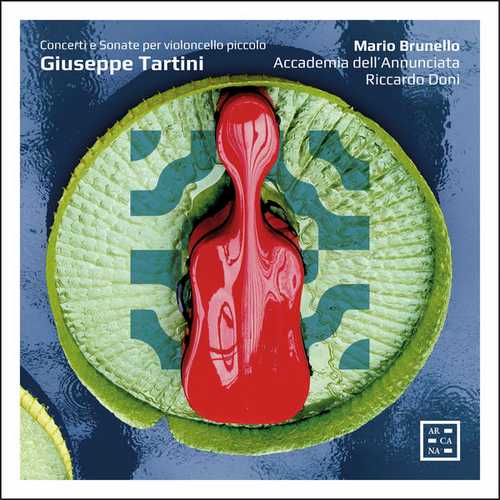
Composer: Antonio Vandini, Giuseppe Tartini, Giulio Meneghini
Performer: Mario Brunello
Orchestra: Accademia dell’Annunciata
Conductor: Riccardo Doni
Number of Discs: 1
Format: FLAC (tracks)
Label: Arcana
Release: 2020
Size: 1.58 GB
Recovery: +3%
Scan: yes
Antonio Vandini:
Cello Concerto in D major
01. I. Allegro
02. II. Andantino
03. III. Allegro
Giuseppe Tartini:
Sonata for Viola da Gamba and Basso Continuo in G Minor
04. I. Adagio
05. II. Andante
06. III. Allegro
Sonata for Viola da Gamba and Basso Continuo in B-Flat Major
07. I. Affettuoso
08. II. Allegro
09. I. Allegro
Sonata a Quattro in D major
10. I. Allegro assai
11. II: Andante
12. III: Presto
Concerto for Cello, Strings and Basso Continuo in A Major, GT 1.A28
13. I. Allegro
14. II: Larghetto
15. III. Allegro assai
Concerto for Cello, Orchestea and Basso Continuo in D Major, GT 1.D34
16. I. Un poco largo
17. II. Allegro moderato
18. III. Grave ed espressivo
19. IV. Allegro
Giulio Meneghini:
Concertone terzo for strings and basso continuo in C Major
20. I. Grave
21. II. Allegro
22. III-IV. Adagio – Allegro assai
To mark the 250th anniversary of the death of Giuseppe Tartini, Mario Brunello and the Accademia dell’Annunciata commemorate one of the great partnerships in the history of eighteenth-century music: the relationship between Tartini and Antonio Vandini, a cellist born in Bologna (cradle of the Italian cello school), active in Padua for fifty years, and the author of the first biography of Tartini, whom he had known since the 1720s. Coupled here for the first time are Tartini’s two cello concertos, probably intended for his friend and colleague, alongside the only surviving concerto by Vandini himself. According to reports of the period, he ‘played in such a way as to make his instrument speak’, that instrument being the violoncello piccolo practised by the virtuosos of Padua in the mid- eighteenth century, here played by Mario Brunello. The expressive heart of the concertos is to be found in the beautiful slow movements: in Tartini the long, eloquent melodic arches create a free inner monologue, while the rich ornamentation recalls folk motifs from the Balkan region, which he may have known. In his marvellous Andantino, Vandini gives the cello a gently symmetrical Vivaldian melody that expands in dialogue with the orchestra.